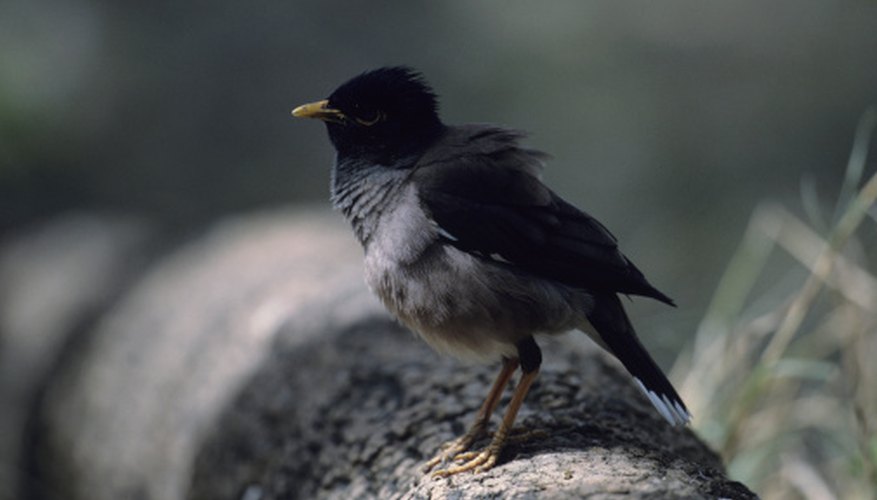The common mynah bird (Acridotheres tristis), a member of the starling family, is native to India. The bird was introduced to the United States in 1865 to fight infestations of Army worms. It is most common in Hawaii and Florida, where it has continued to consistently establish itself since the mid-1980s. There is no visual difference between the male and female. Distinguishing between the two must be done through DNA testing.
DNA Testing
Bird DNA testing accurately reveals the sex by differentiating between the specific male and female DNA patterns. There are two types of bird DNA analyses -- blood testing and feather testing. In blood testing, the veterinarian typically clips a small amount of nail from the bird's claw and analyses the red blood cells. In feather testing, a healthy feather is taken from the bird and skin cells within the feather's shaft are examined. Sexing of birds using DNA analysis is conclusive.
- Bird DNA testing accurately reveals the sex by differentiating between the specific male and female DNA patterns.
- In blood testing, the veterinarian typically clips a small amount of nail from the bird's claw and analyses the red blood cells.
Breeding
The bond of the male and female common mynah bird is strong and both share in all parenting responsibilities, including preparing and maintaining the nest, ensuring the eggs are safe and caring for their young. The female generally lays between three and five blue-green eggs and both parents incubate them for approximately 11 to 18 days. The young remain in the nest until fully fledged, which is typically between three weeks and one month. The common mynah bird is known to live in two separate nesting sites at the same time; a temporary breeding nest during the summer and a permanent, year-round nest for overnight incubating and hatchling care.
- The bond of the male and female common mynah bird is strong and both share in all parenting responsibilities, including preparing and maintaining the nest, ensuring the eggs are safe and caring for their young.
Characteristics
The common mynah bird has a glossy black to chocolate brown body, an orange-yellow bill that generally curves slightly, bright yellow patches of skin below and behind the eyes, and white patches on the top and bottom of its short wings. It is a somewhat stocky bird that hops and waddles confidently as it walks.
Behaviour
This type of bird tends to be highly social and expressive. It is known to be loud, making a variety of sounds from a melodic, high-toned chirping to a deep, throaty sound. It is recognised for its skill in learning to mimic humans and other song birds. It has the ability to sing songs and its vocabulary can be remarkable. The common mynah bird is one of the fastest flying birds. It flies in large flocks, especially at sunset, when roosting and during migration.
- This type of bird tends to be highly social and expressive.
- It is recognised for its skill in learning to mimic humans and other song birds.
Habitat and Diet
The common mynah bird lives in parks, farmlands and streets. It is known to reside in the holes of trees and build nests in urban areas near windowsills and under eaves or ceiling spaces. It prefers moderate climates and migrates toward warmer areas in the fall and winter, typically returning to the same nest in the spring. The common mynah bird's diet consists of fruit, insects and small fish, birds and lizards.
- The common mynah bird lives in parks, farmlands and streets.
- It is known to reside in the holes of trees and build nests in urban areas near windowsills and under eaves or ceiling spaces.
